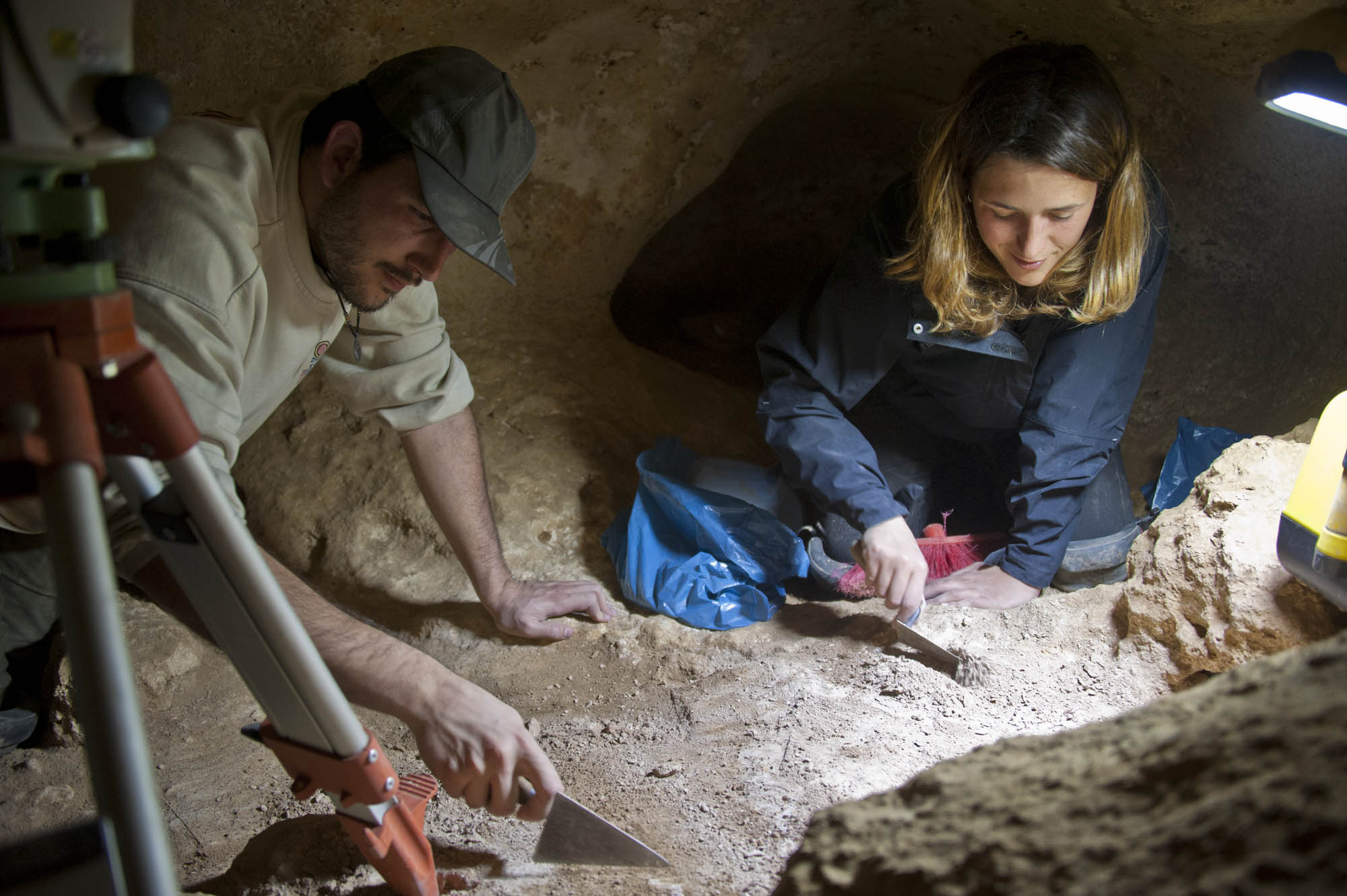Fieldwork is both going on an adventure and arriving home.
Mar Vergara Martín, Spanish archaeologist
When visiting a museum or an archaeological site normally people don’t think about who brought the artefacts to those rooms. Archaeologists aren’t usually a well-known figure. But archaeologists’ work is really important to bring the Heritage back to life and to uncover History. Then, why is their daily life on the field so unaware even for those people who enjoy the sites, the artefacts and the History?
Working on the site is the most pure way of Archaeology, it is where you realise if you are passionate about your job.
Fernando Mora Rodríguez, Spanish freelance archaeologist
And what a better way to know what they do that taking a look into a diary wrote by an archaeologist while doing some fieldwork?
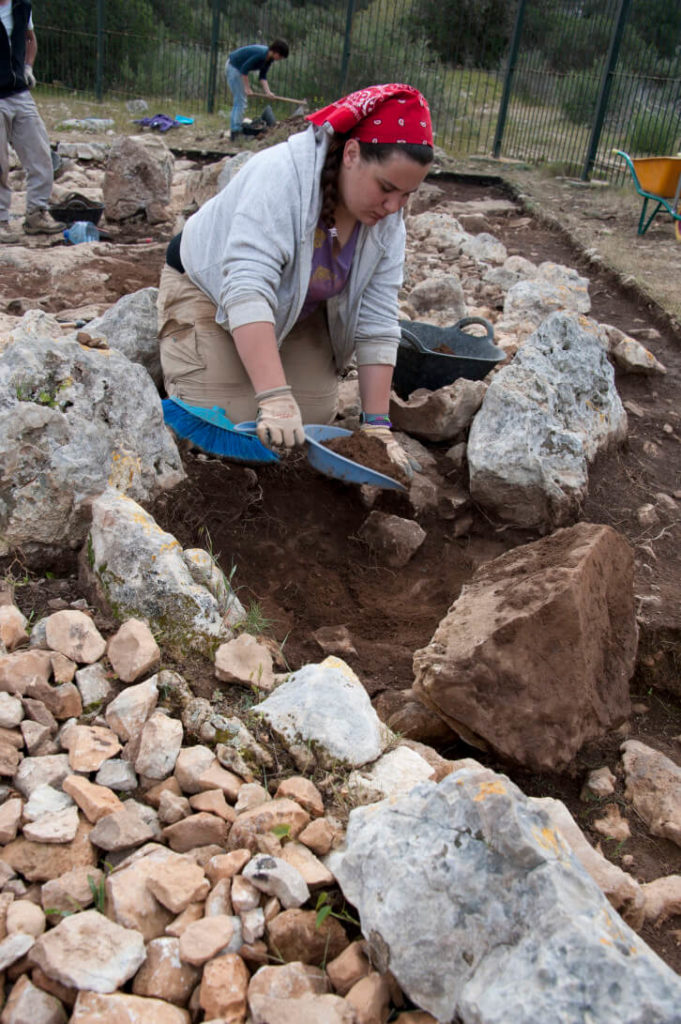
Aida’s Excavation Diary
Aida Loy excavating the outside of the wall of one of the houses of the Bronze Age site Cap de Barbaria II in Formentera, Spain / Photo: ArqueoBarbaria
DAY 1.
We arrived just before dinner. I don’t know anyone but everyone seems nice. After dinner, we chose our bed in one of the rooms. The beds are a bit old but comfy. After, we met in the dining/living room that we are going to share during the next weeks. We were divided by teams and we did a schedule to see who was in charge of the daily tasks like preparing the meals, cleaning the toilets and so. Before going to sleep I prepared my stuff for tomorrow: excavation pants, t-shirt and sweater (it’ll probably be cold in the morning), gloves, work boots and the headscarf for the sun. In the backpack, I already have the essentials: sunblock, tissues and a bottle of water. The excavation materials are provided by the project.
The first couple of days are a always a bit like moving to a new school, you don’t know anyone and the work is new/different/exciting…
Eoin Byrne, Irish archaeologist
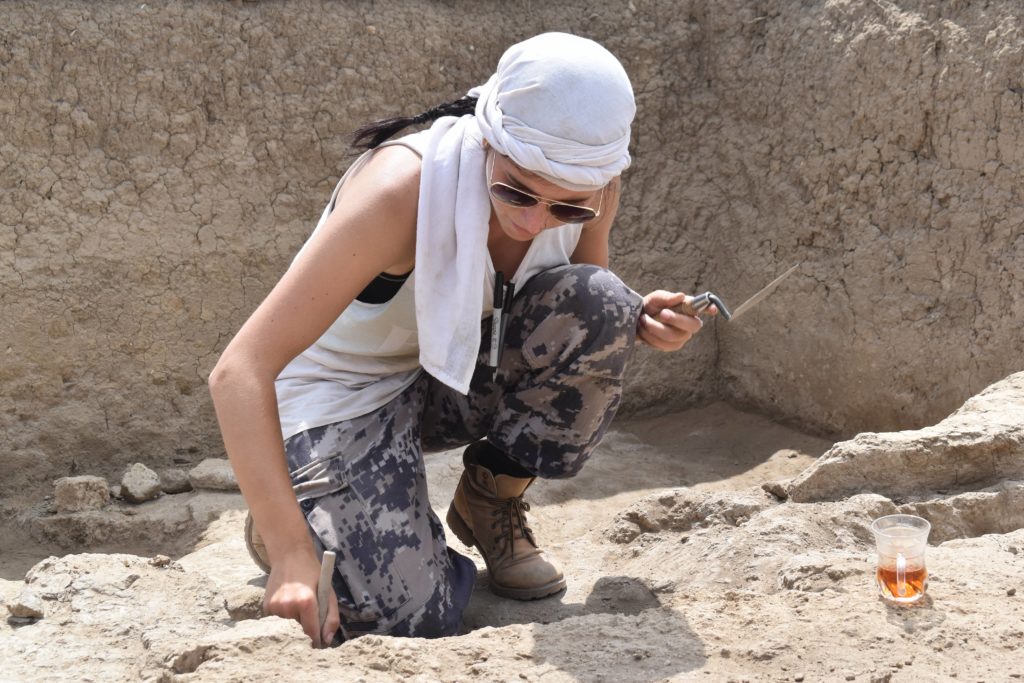
Fieldwork concept is a whole different lifestyle. It’s a unique way to experience the world.
Judyta Olszewski, Polish-Canadian freelance researcher working in the Netherlands
DAY 2.
After breakfast, we took all the materials and loaded them into the cars to go to the site. It is a bit far from the house so we go by car, but so we can enjoy some music before start working. Once we arrived at the site, the director told us a bit of the background, both historical for the site and of what they have done in previous excavations. It is a nice site. Today, as it is the first day, we mainly clean the grass that has been growing since last year campaign.
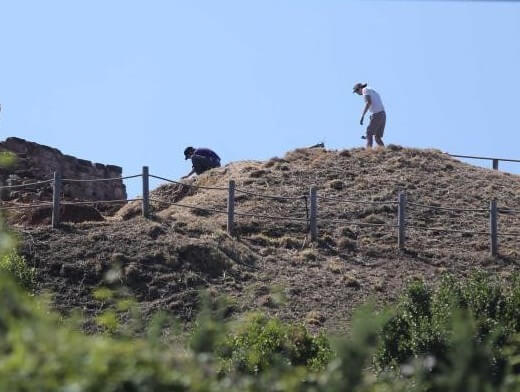
To me an archaeological campaign is a chance to reconstruct the past but also to share the knowledge and to known other ways of working with the rest of the people in it.
Javier Aragoneses Martín, Spanish freelance archaeologist
DAY 3.
We finally started to dig up today. We were divided into two groups. One to excavate the outside of the walls and the other to work in the inside. In the outside is appearing a lot of shells and pottery fragments. In the inside, they are starting to get to the house floor. It is really interesting to see how they lived. Apparently from next week we’ll go excavate a small graveyard that belongs to this site in shifts. We have to be careful with the remains as they are super delicate and, also, we need to fill some docs with all the information we can get from the burials and the remains.
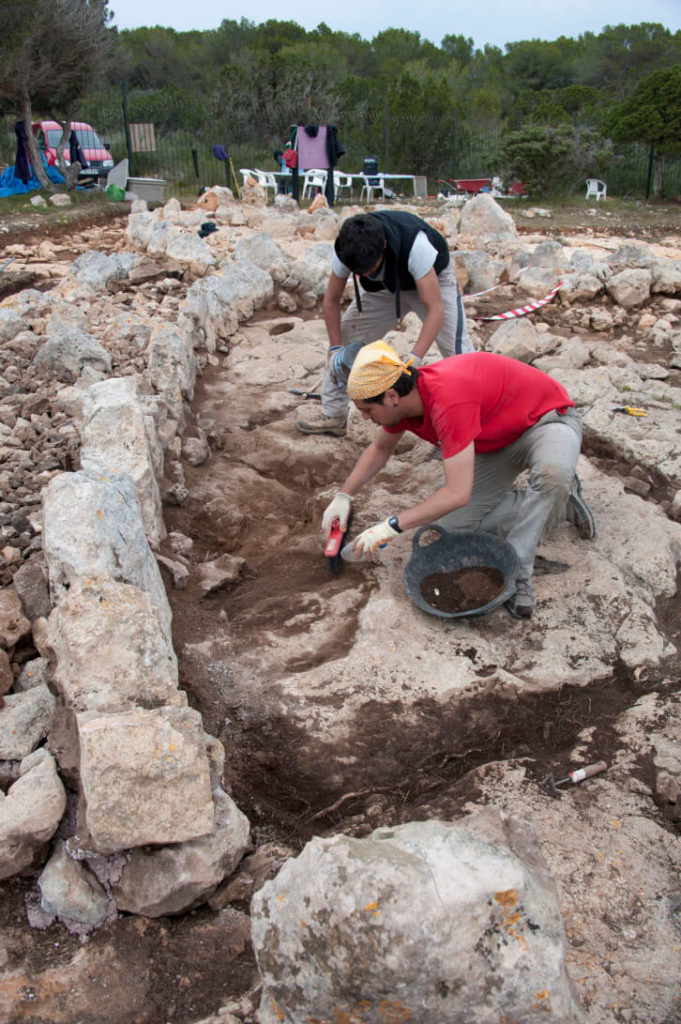
Fieldwork is the way I feel more connected with the past population and it is a liberating feeling.
Uxue Pérez-Arzak, Spanish PhD researcher
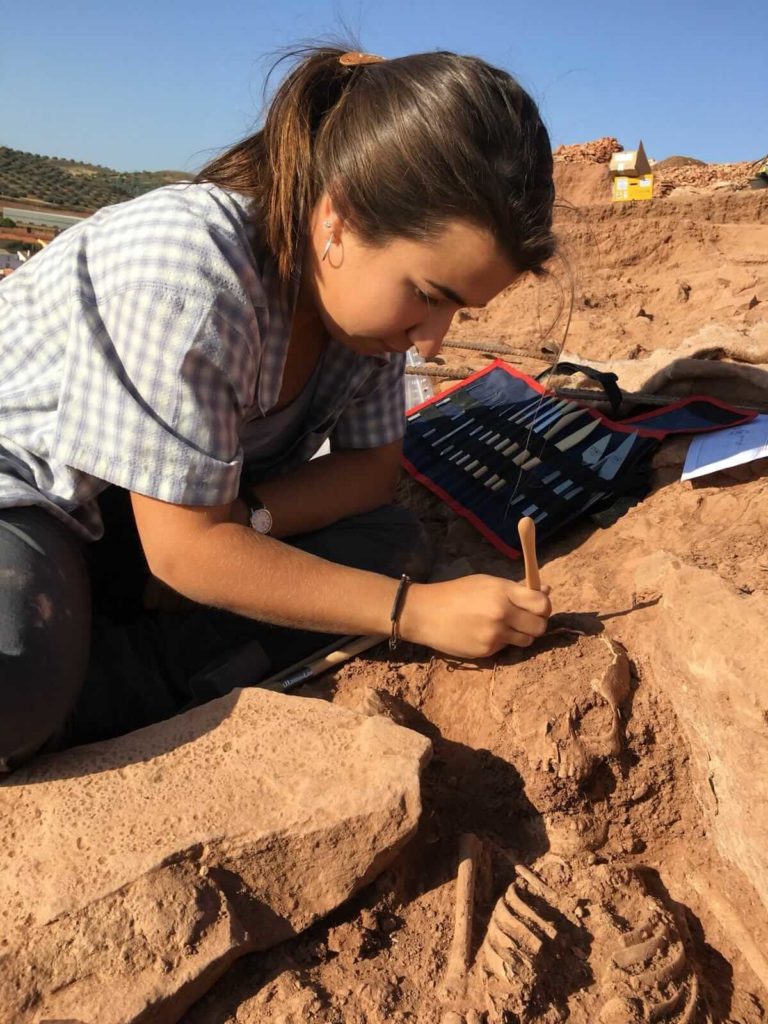
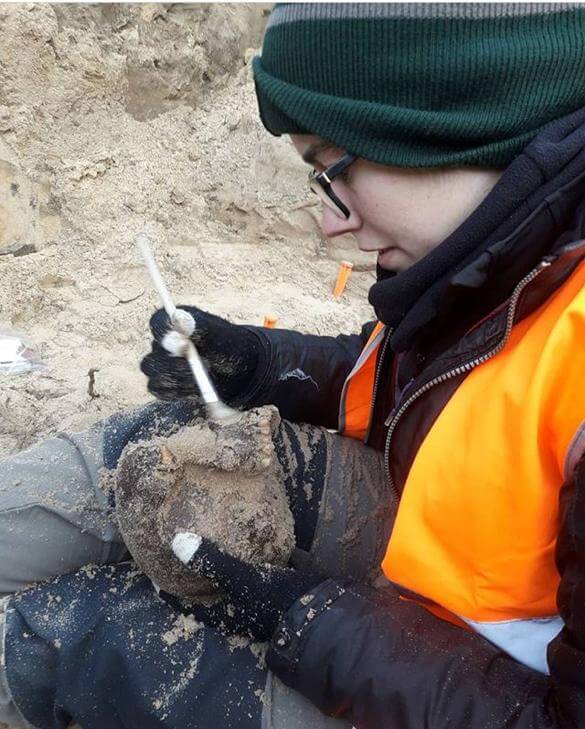
DAY 5.
Four days of work have gone. It has been nice. Today I’m helping with the total station to take levels and heights of the findings, I’m also writing the labels for all the artefacts we found, right now mainly some small broken pottery pieces and a lot of shells, what is normal as we are close to the sea. I’m also taking some pictures as the wall of the house we are digging up is completely out. We were told that these pictures will be combined with the measurement of the height so they can do a 3D model of the site.
Every time I am in a site working I feel I get the Nirvana: everything is happiness, well-being, calm and peace.
Daniel Pérez Legido, Spanish freelance archaeologist
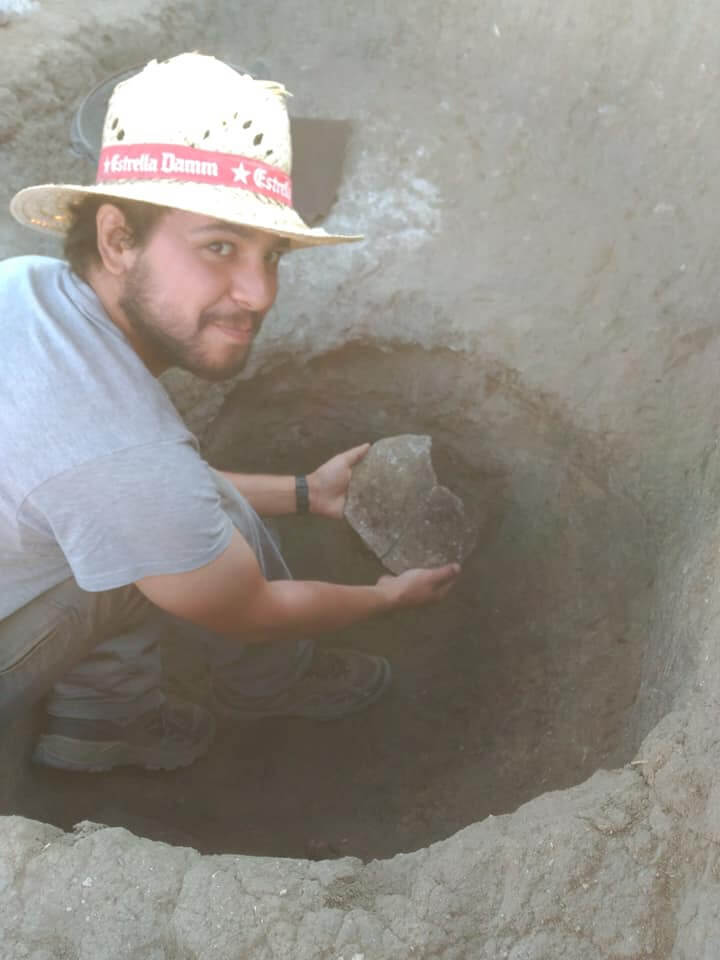
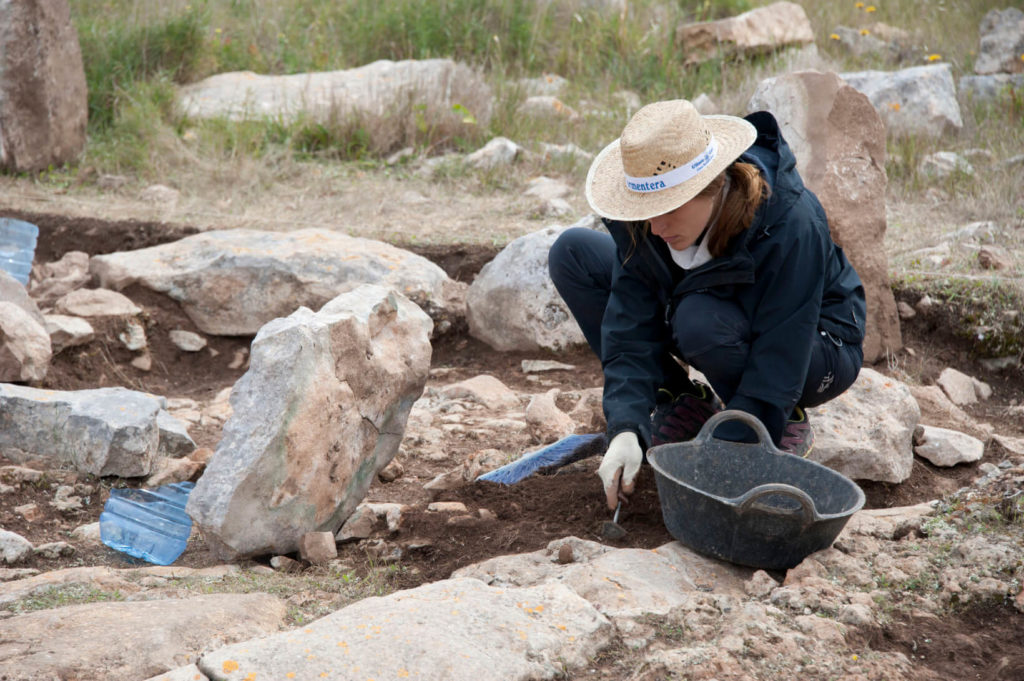
I am moved to think that I am following the clues of the lives of other people that wherein that same place a long time ago.
María Camps Graupera, Spanish archaeologist
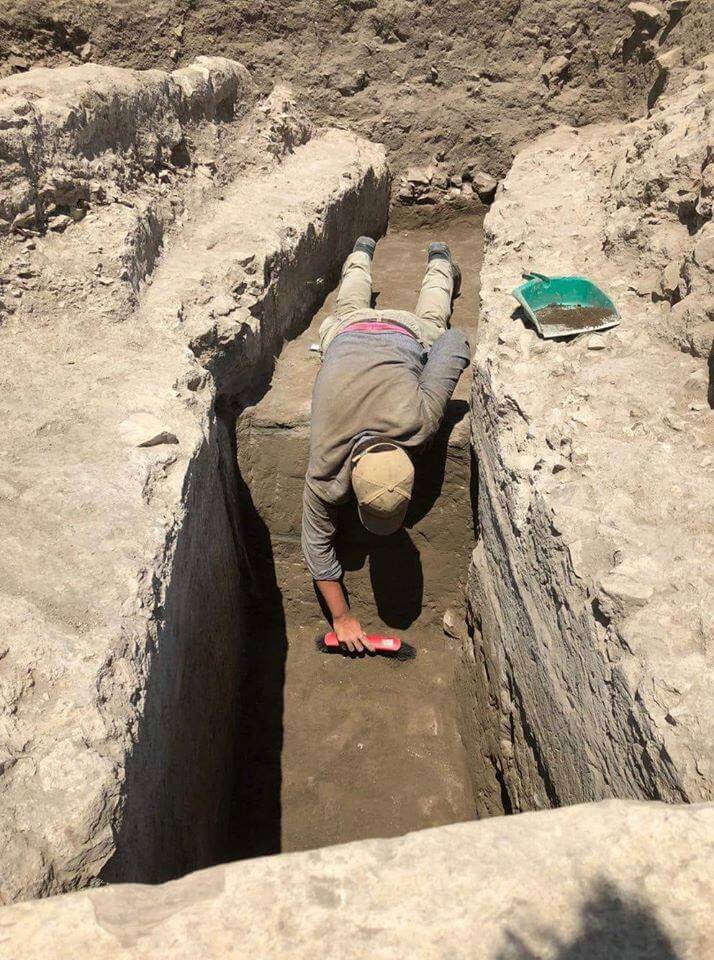
DAY 6.
Today is the last day of the week. We worked a lot, but nothing that we can’t handle. Today I was in the lunch team, so I didn’t have a long coffee break after it. It was sunny so everyone went out to the backyard to rest while enjoying the sun. Luckily they made us coffee while we cleaned the dishes so I could enjoy that coffee right after I was done.
What I like the most is that you feel like you’re in a bubble, it’s like you’re isolated from the world.
Jose María Pout Lezaun, Spanish archaeologist working on an English commercial company
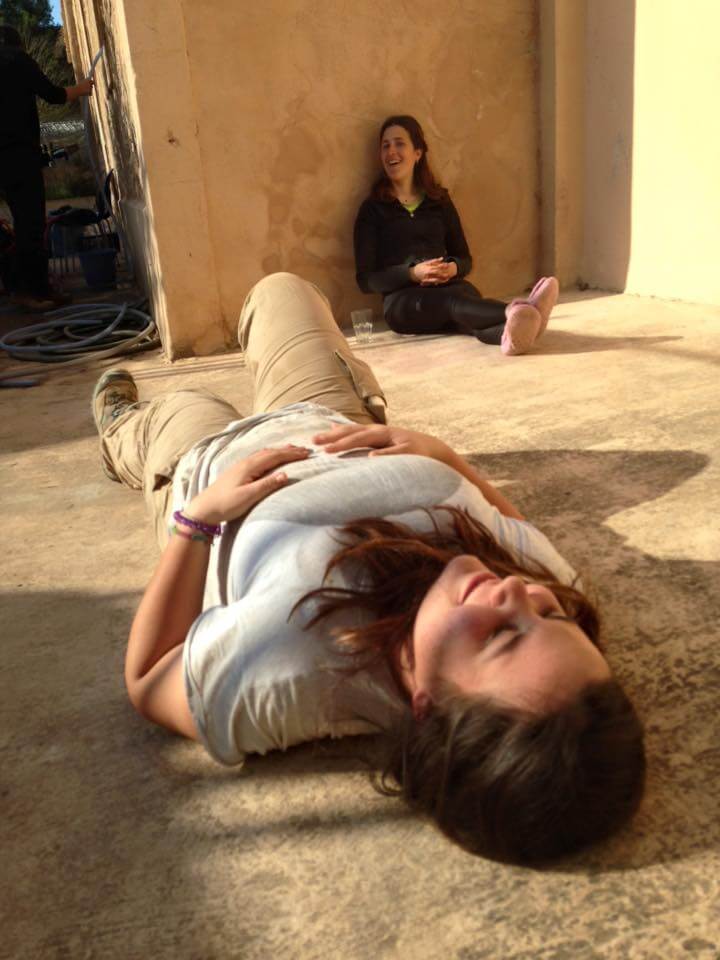
DAY 8.
First free day. It feels amazing to sleep passed 07:00. Yesterday we had a small party/get together in the house, it was nice. And we planned a short trip for today, so we’ll go to discover other archaeological sites around.
DAY 10.
We have new people in the team since yesterday! Two of the specialists had come to check some of the findings. Also, the restaurateurs arrived. They are consolidating the buildings that are out. In the afternoons, we do some lab work; I like it, we do different things. Some people work outside doing some flotation with the soil of the new house we are working in; others are cleaning pottery and others filter manually the floated and dried soil. I was working on that team today, and I found a small necklace bead, it was simple but nice. The specialists also work with us, but they are working on their thing, they take measures, draw, take pictures… but it is nice to see everyone working in the same space, and they are open to explain anything they are doing. The director also works in the lab, but she works on the excavation diary, so sometimes she asks us about what we have done and which areas we opened and finished that day.
My favourite would be probably looking after individual small features myself or processing the finds.
Graham Nevin, Irish archaeologist working in a commercial company
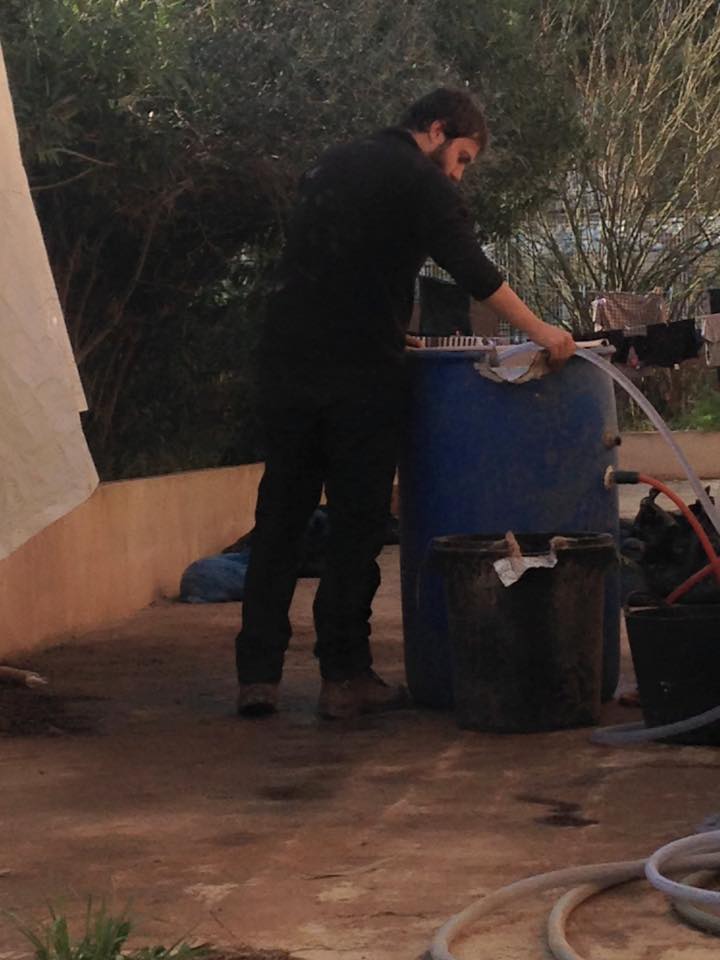
DAY 13.
During this week we’ll have some talks after the lab. They’ll be in the local library and they are open to everyone, so anyone in the town can join. Yesterday was the opening and today the specialists made a small talk each about their work on the site before they leave tonight. It was really interesting. Tomorrow we’ll have a talk from a local archaeologist. The only bad thing about the talks is that we have to hurry to be showered and dressed as normal people again after lab.
It is a moment of disconnection of the world. While I am excavating my only thoughts are in the squares and the stories they hide.
Cristina Enjuto Crespo, Spanish archaeologist
DAY 16.
It sounds incredible but it’s raining, which means we couldn’t go to the site, we stayed at the house and work on the lab all day. Good thing is, we could sleep a bit longer.
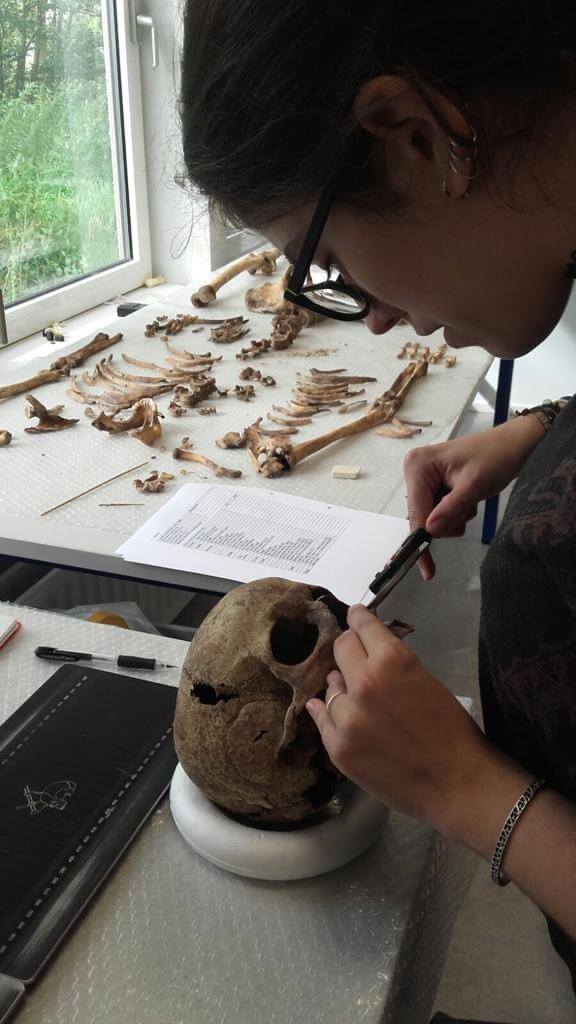
DAY 18.
Today some journalists came to the site. The director explained the site to them, they talked with some of us and took pictures as well. Bad thing is that they came a bit later than they said so we had to make our sandwich break later than normal, I was starving, the sandwich and the nuts tasted like the best meal in the world. Last week some schools kids came to visit also, it is nice to have visits from time to time and explain the site.
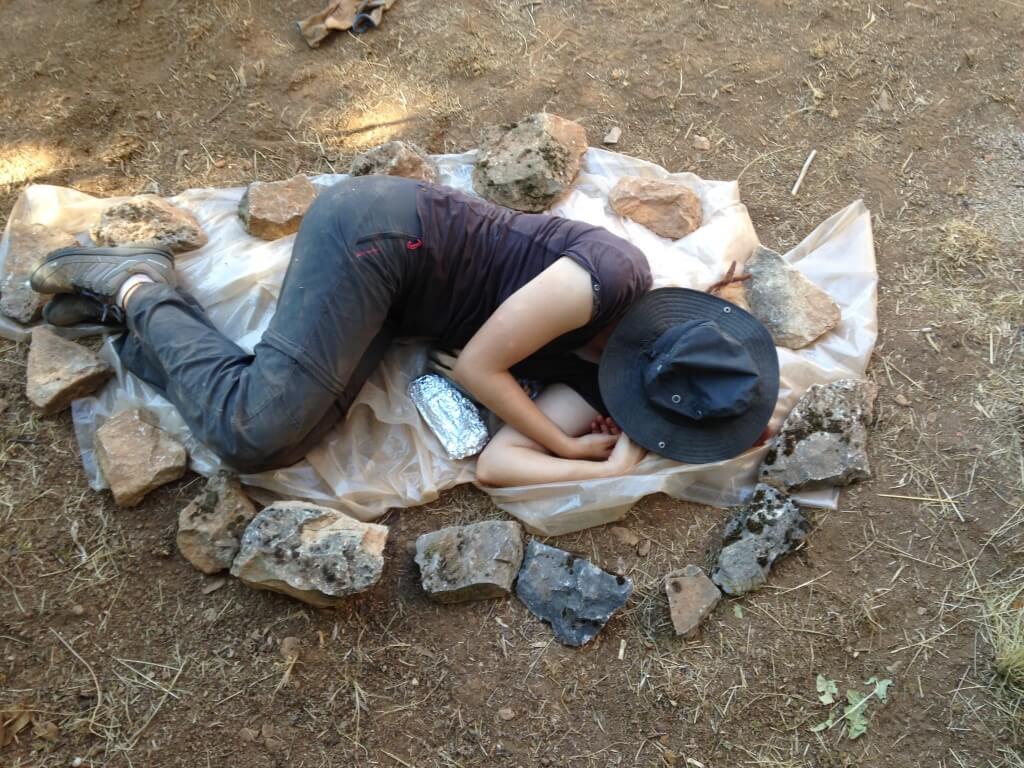
I really love that each excavation is different (…). I also really enjoy the difficulty of understanding what you are actually excavating because most of the time we don’t know what is going to be found.
Nicolas Revert, French regional archaeologist
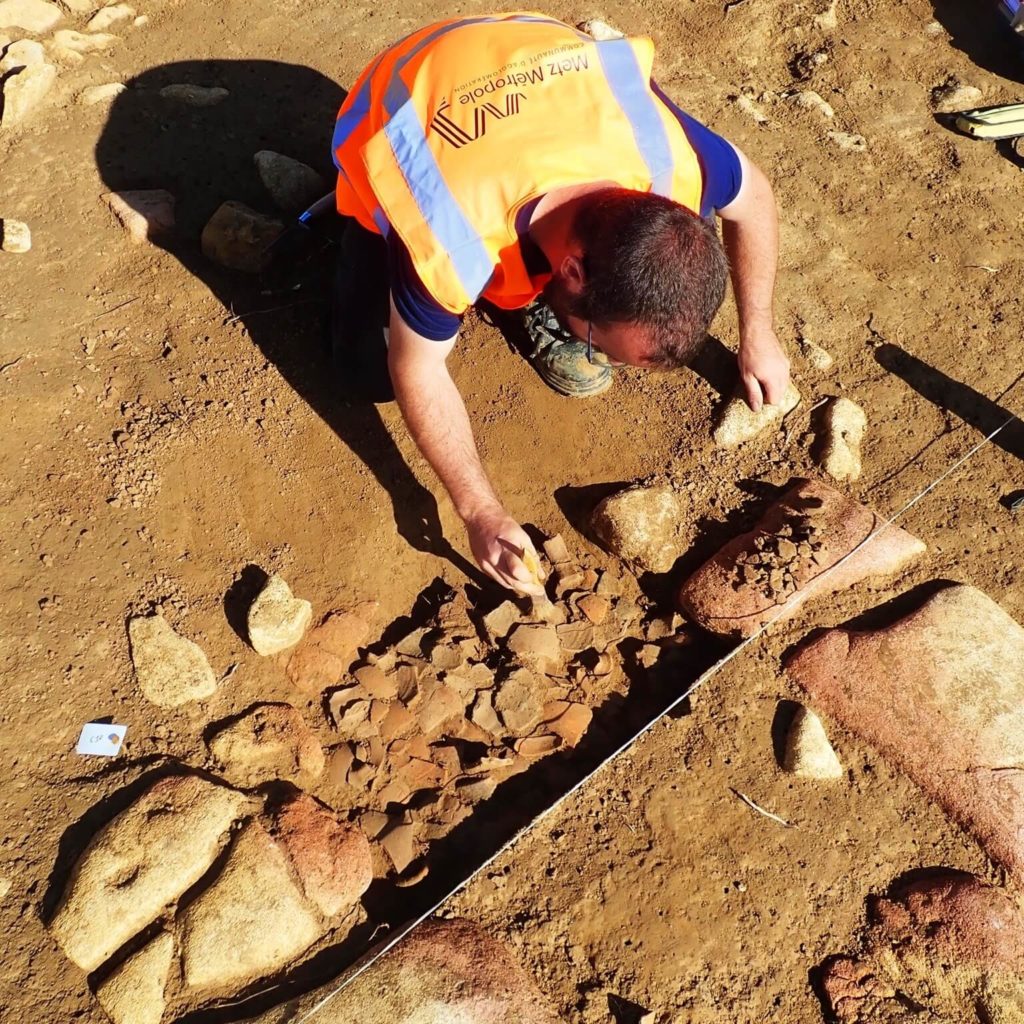
DAY 21.
Last day of the excavation was great. Today we went to finish all the open spaces and cover what wasn’t finished yet, so it is protected until next year. We took the last pictures. This evening we’ll have a closing conference for all the town. It is a tradition here to show the people what we have done, we’ll also have a small exhibition, the bead I found is going to be there, and last but, not least, we’ll have some wine and snacks. As it is the last day we decided to go have dinner outside so I’m excited about that too. Probably we’ll have a goodbye party. Tomorrow will be bittersweet. I’m exhausted by the hard work but I’m really happy with the people I have met here. Hopefully, we’ll keep in touch.
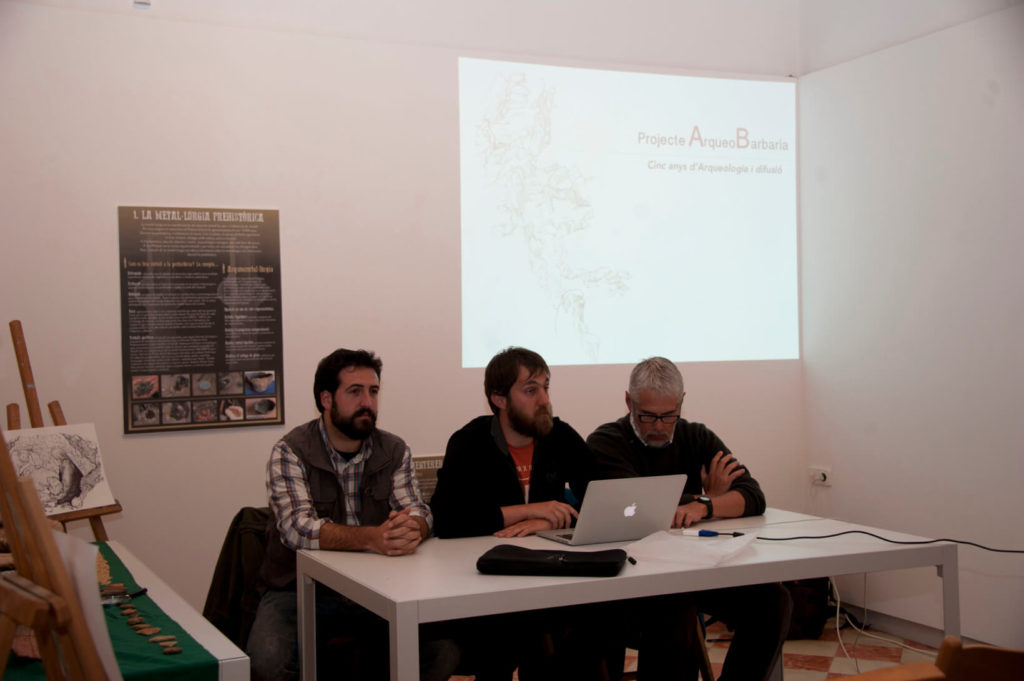
I feel the responsibility of perform a good job of documentation of the remains and with an adequate communication of our job.
Pau Sureda Torres, Spanish researcher
This is my experience but, obviously, there are as many experiences as people; and, even when you go to the same site twice, the circumstances are not the same.
An excavation is an accumulation of feelings all together… it is a really hard, physical work, but which gives you a lot of emotion and expectation.
Sonia Sequera Pineda, a Spanish archaeologist working on a commercial company
In the fieldwork, you go deep into Archaeology, but also into Heritage and History, you got to discover the past, and that is one of the best feelings an archaeologist feels. We do a lot of different tasks while on fieldwork, but all of them are important. All of those tasks bring History back to life and allows everyone to enjoy those Heritage spaces.
So next time you visit an archaeological site, or you walk into a museum, think in all those archaeologists, that dig up in weird positions, that end up cover in dust and exhausted after the whole day under the sun or in a cave, but who enjoy their work as much as they can.
I want to thank all the great archaeologists that had collaborated with me in this article letting me use their pictures or giving me great answers when I asked then why do they like to do fieldwork. If you look for most of them on the internet you will find their incredible work. Also, I want to thank the archaeological project Arqueobarbaria that allowed me to use pictures and information about the excavation for this article. The information I used was based on my participation in this project when we excavated the Bronze Age site Cap de Barbaria II and the Bronze Age burial site Cova 127 in Formentera, Spain.
XXXXXXXXXXXXXXXXX